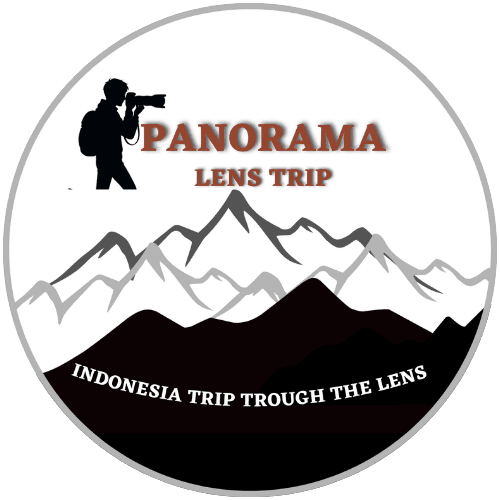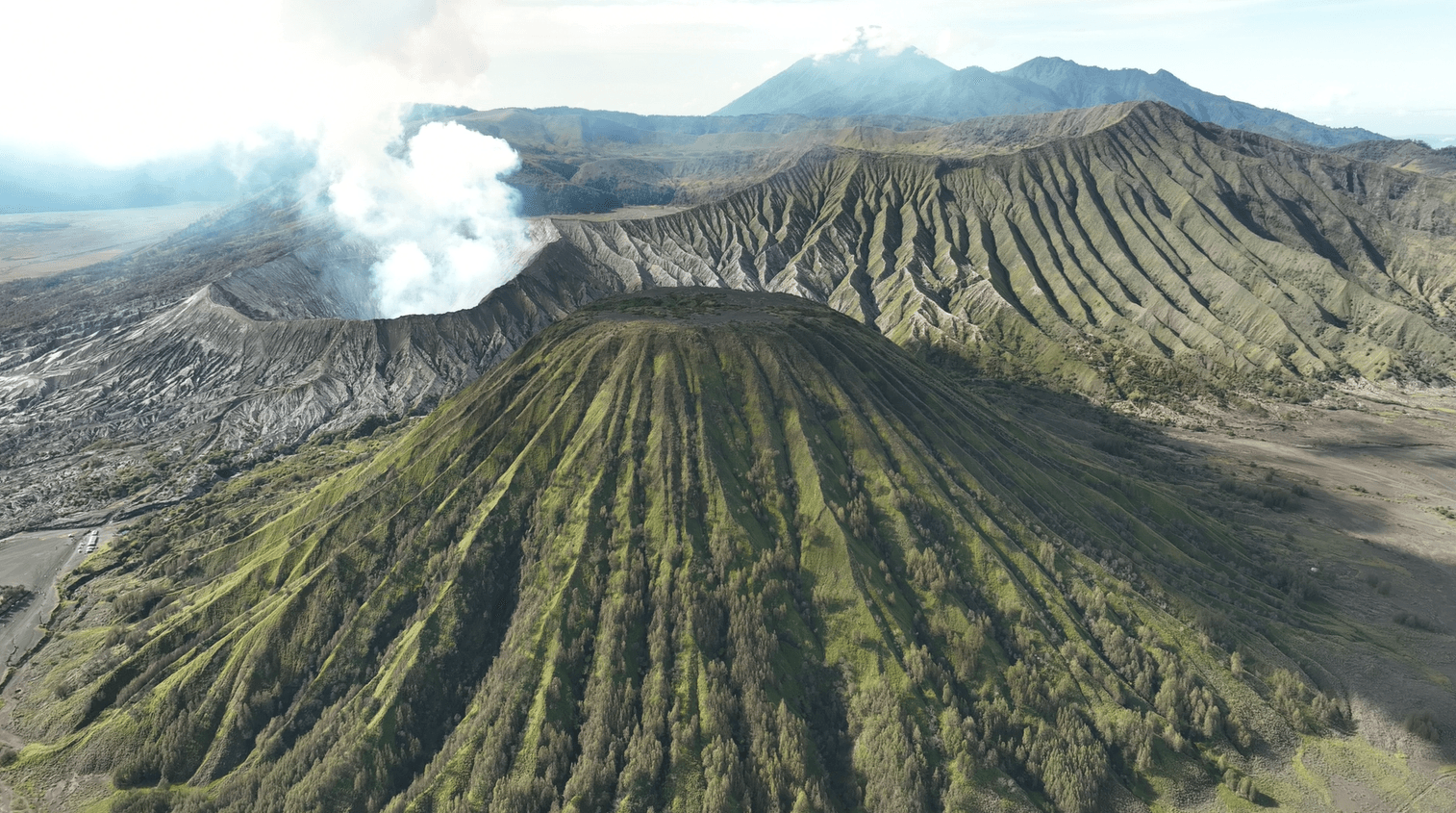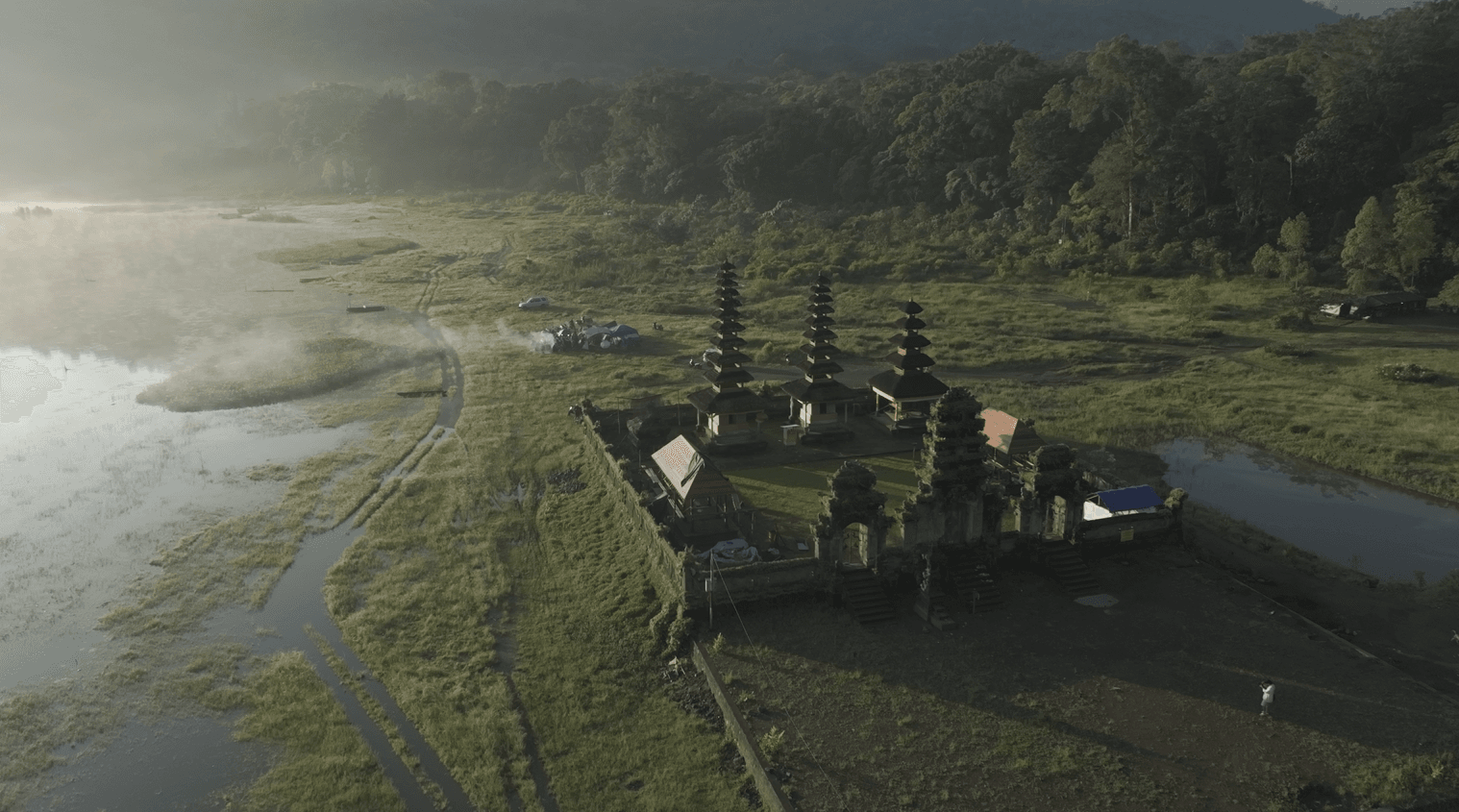Introduction
Whispering Sand Bromo Photography – When people think of Mount Bromo, the image that usually comes to mind is the dramatic sunrise with the smoking crater in the background. But beyond the famous viewpoints, lies a vast, mysterious desert known as Whispering Sand Bromo Photography. With its shifting dunes, surreal landscapes, and almost mystical atmosphere, it is a paradise for photographers seeking something different. If Bromo is the stage, then Whispering Sand is its hidden poetry—subtle, captivating, and unforgettable.
What is Whispering Sand Bromo?
The Whispering Sand Bromo, or Pasir Berbisik in Indonesian, is a massive expanse of volcanic ash that spreads across Bromo’s caldera. The name comes from the sound created when the wind sweeps across the fine grains of sand, producing a soft, whisper-like murmur. It’s not just a geological marvel but also a cultural symbol for the Tenggerese people, often featured in local folklore and festivals.
Why Whispering Sand Bromo is a Photographer’s Dream
Imagine standing in the middle of a vast, empty desert where the only movement is the dance of the wind shaping the sand. The sheer emptiness creates endless opportunities to play with perspective, composition, and mood. For photographers, Whispering Sand Bromo photography is a blank canvas where creativity takes the lead—whether it’s minimalist shots, dramatic wide angles, or cinematic portraits.
The Best Time to Capture Whispering Sand Bromo Photography
Sunrise Magic: When the First Light Touches the Sands Bromo
There’s something truly enchanting about being on the Whispering Sand as the sun slowly rises behind the surrounding mountains. The first rays of golden light stretch across the desert, creating soft, elongated shadows that highlight every ripple and curve of the dunes. The cool morning air often brings a misty haze, adding a dreamlike atmosphere to your photos. At this time, you can capture the sands glowing with subtle pastel tones—shades of pink, orange, and gold blending seamlessly into the sky. Sunrise is also when the area is less crowded, allowing you to create serene and intimate photographs without distractions.
Golden Hour: The Warm Glow That Enhances Every Detail
As the sun climbs higher but still hangs low on the horizon, the golden hour brings a magical warmth to the sands. This is when the Whispering Sand truly comes alive with rich, golden hues. The soft, angled light emphasizes textures, making the patterns in the sand look more dramatic and three-dimensional. Shadows fall gently, creating a perfect balance between light and dark. Whether you’re shooting landscapes, silhouettes, or portraits of local horse riders crossing the desert, golden hour delivers depth and storytelling to your photos. Think of it as nature’s way of adding a filter—one that makes every shot look cinematic.
Midday Brilliance: Harsh Light but Endless Opportunities
While many photographers avoid midday because of the harsh light, it can actually be an exciting challenge at Whispering Sand. The intense sunlight creates bold contrasts, casting sharp, dramatic shadows across the dunes. The bright, almost blinding light emphasizes the desert’s emptiness, giving your photos a surreal and otherworldly quality. With the right use of filters and exposure settings, midday can turn into an opportunity to capture high-contrast black-and-white shots, highlighting the raw essence of the volcanic desert. Just be sure to protect your gear and yourself from the heat and blowing dust.
Sunset Drama: When the Sky Paints the Sand in Fiery Colors
As the day winds down, sunset transforms Whispering Sand into a theater of color. The once golden tones shift to deep oranges, fiery reds, and purples, painting the landscape with dramatic intensity. The fading light creates striking silhouettes of lone travelers or horse riders against the glowing horizon. This is the moment to experiment with wide-angle shots that capture both the sky and the sand in one breathtaking frame. Unlike the soft calm of sunrise, sunset carries an energy and drama that feels bold, passionate, and unforgettable—perfect for photographers who love storytelling through their images.
Night Sky Wonders: A Stargazer’s Paradise on the Sands
When night falls and the crowds disappear, Whispering Sand becomes one of the best places in Bromo for stargazing and astrophotography. With minimal light pollution, the desert opens up to reveal the Milky Way stretching across the sky like a cosmic river. Long exposure shots allow you to capture star trails swirling above the silent sands, creating images that feel almost unreal. The stillness of the night, broken only by the faint whisper of the wind, makes the experience deeply spiritual. Photographing the night sky here isn’t just about taking pictures—it’s about connecting with the universe in one of the most magical settings you’ll ever find.
Photography Gear You Should Bring
A wide-angle lens captures the vastness, while a telephoto lens highlights patterns in the dunes. A tripod is a must for low-light conditions, and ND filters help balance exposure during harsh daylight. For aerial perspectives, drones add another layer of creativity, though always check local rules before flying.
Choosing the Right Angles
Angles matter here. Shooting low to the ground emphasizes the texture of the sand, while high-angle shots capture its endless spread. Playing with light and shadow transforms ordinary dunes into surreal landscapes, making every shot look like a painting.
Incorporating Human Elements
A lone traveler walking across the dunes, or a traditional Tenggerese horse rider, adds scale and storytelling to your photos. Whispering Sand Bromo becomes not just a backdrop, but a stage where culture and nature meet.
Whispering Sand Bromo in Different Seasons
Whispering Sand Bromo Photography – In the dry season, the sands shimmer in golden light, while the rainy season creates dramatic skies with moody contrasts. Each season offers a new perspective, ensuring no two photography sessions feel the same.
Creative Techniques for Stunning Shots
Whispering Sand isn’t just about wide-open landscapes—it’s also a playground for creativity. The shifting dunes, moody skies, and empty space give you the freedom to experiment and push your photography skills beyond the ordinary. If you’re looking to create photos that stand out and feel like works of art, here are some creative techniques you can try while exploring this mystical desert.
Minimalist Compositions: Finding Beauty in Simplicity
One of the most powerful ways to capture Whispering Sand is by embracing minimalism. The vast, empty desert naturally lends itself to clean compositions where less truly becomes more. Place a lone subject, like a person, a horse, or even a single shadow, in the middle of the wide frame to emphasize scale and isolation. The negative space of the sand and sky helps draw attention to your subject, making the photo feel powerful and dramatic. Minimalism here doesn’t mean boring—it means telling a story with subtlety and emotion, letting viewers feel the silence of the desert.
Black-and-White Photography: Highlighting Textures and Contrast
If you want to strip the landscape down to its raw essence, try converting your shots into black and white. The sand’s ripples, the patterns made by the wind, and the dramatic light and shadow all become more striking without the distraction of color. Black-and-white images of Whispering Sand often feel timeless and mysterious, like something out of a classic photography book. By focusing on texture, contrast, and form, you transform the desert into an abstract masterpiece where every grain of sand seems alive.
Long Exposure Experiments: Capturing the Movement of Time
Whispering Sand is constantly shifting under the influence of wind, and long exposure photography allows you to capture that motion in a way that feels almost magical. By slowing down your shutter speed, you can create soft, flowing effects that make the sand look like liquid waves instead of static ground. Combine this with the movement of passing clouds or even star trails at night, and your photos will look surreal, almost otherworldly. Long exposure shots also work beautifully at sunrise or sunset, when the changing colors add another layer of emotion to your images.
Challenges of Shooting at Whispering Sand
The desert is not always kind. Harsh sunlight demands patience, while dust and wind can threaten your gear. Always carry protective covers and clean your equipment after each shoot.
The Connection Between Culture and Photography
Photography here isn’t just about landscapes. The Tenggerese people often hold rituals and festivals across the sands, such as the Yadnya Kasada festival, where offerings are thrown into the Bromo crater. Capturing these moments tells a deeper story—where culture and nature live in harmony.
Safety and Ethical Photography Tips
Respect is key. Avoid disturbing local rituals, stay on designated paths, and don’t leave trash behind. Whispering Sand is fragile, and photographers have a responsibility to keep its beauty intact.
Nearby Spots to Combine with Whispering Sand Bromo Photography
While Whispering Sand is a treasure on its own, its beauty becomes even more rewarding when combined with nearby attractions around Mount Bromo. Each spot has a unique character, offering contrasting landscapes that complement the desert-like atmosphere of the sands. By exploring these places together, you create a diverse photography portfolio filled with drama, texture, and cultural richness. Let’s take a closer look at the must-visit locations near Whispering Sand.
Mount Bromo Crater: Capturing the Heart of the Volcano
Just a short ride away from the Whispering Sand lies the iconic Mount Bromo crater—a destination that draws travelers and photographers from across the globe. Climbing up to the rim of the crater rewards you with a jaw-dropping view of its smoking center, a reminder of the raw volcanic power that shaped the entire landscape. For photographers, the contrast between the barren Whispering Sand below and the active crater above creates a compelling narrative of fire and ash. Shooting early in the morning gives you softer light, while late afternoon brings dramatic shadows over the crater walls. Don’t forget to capture the human element too—pilgrims, tourists, and locals making their way up the crater stairs add a layer of storytelling that complements your shots of the sands.
Teletubbies Hill: A Green Contrast to the Desert
If Whispering Sand Bromo Photography is all about emptiness and muted tones, then Teletubbies Hill offers the exact opposite. This lush, rolling landscape is covered in vibrant green grass, especially during the rainy season. The name comes from its resemblance to the hills in the children’s show Teletubbies, with soft curves and a cheerful vibe. Photographically, Teletubbies Hill is the perfect companion to Whispering Sand because of the stark contrast—sand versus grass, desert versus meadow. Wide shots capture the symmetry of the hills, while closer frames highlight the textures of the greenery. Visiting during golden hour adds a magical glow to the fields, making them look almost surreal. For storytelling, including locals or grazing horses gives the scene a pastoral charm that balances the rawness of Whispering Sand.
Penanjakan Viewpoint: The Classic Sunrise Panorama
No trip to Bromo is complete without visiting Penanjakan Viewpoint, one of the most famous sunrise spots in Indonesia. From here, you get a sweeping panorama of Mount Bromo, Mount Semeru (the tallest volcano in Java), and the surrounding Tengger Caldera blanketed in morning mist. It’s a photographer’s dream scene, often described as one of the most iconic views in Southeast Asia. Combining shots from Penanjakan with your Whispering Sand portfolio allows you to show two different faces of Bromo: the intimate, textured beauty of the desert, and the grand, cinematic scale of the entire volcanic complex. Arrive early to secure a good spot—sunrise here attracts crowds—but the reward is worth it. Once you’ve captured the wide vistas, zoom in to catch details like Semeru’s smoke plume or the golden light hitting Bromo’s crater walls.
Savannah Valley (Bukit Savana): A Hidden Ocean of Grasslands
Just beyond the sands, you’ll find the Savannah Valley, also called Bukit Savana, which feels like stepping into a completely different world. Here, tall grasses sway with the wind, creating waves of green that stretch as far as the eye can see. During the dry season, the grasses turn golden, giving the valley a warm, autumn-like tone that contrasts beautifully with the dark sands. Photographers will love experimenting with perspectives here—placing a subject in the middle of the field emphasizes scale, while close-up shots highlight the delicate details of the grass against the backdrop of volcanic mountains. This valley often surprises visitors with its quiet beauty, offering a softer, more peaceful vibe after the stark intensity of Whispering Sand.
Tips for First-Time Visitors
If you’re planning your very first trip to Whispering Sand Bromo Photography, it’s natural to feel both excited and a little unsure. This part of Bromo is stunning but can also be challenging if you’re unprepared. From navigating the area to staying comfortable in unpredictable weather, here are some essential tips to help you make the most of your visit.
How to Get There: Planning Your Journey to Whispering Sand Bromo
Most travelers begin their journey from the towns of Probolinggo or Malang, both of which serve as popular gateways to Mount Bromo. From there, you can either book a guided tour, rent a jeep, or hire a motorbike to reach the caldera. The road leading into the sea of sand is rugged, and the volcanic dust can be intense, which is why jeeps are the most common mode of transport. If you’re traveling independently, make sure you leave early, as the trip involves steep roads and foggy conditions in the morning. Planning your route ahead of time saves you from unnecessary stress and ensures you’ll arrive at the sands in time to capture the best light.
Local Guides: Why Hiring One Makes a Difference
While it’s possible to explore Whispering Sand on your own, hiring a local guide can elevate your experience. Guides not only know the safest paths through the shifting sands but also share fascinating insights about the Tenggerese culture, local legends, and the natural history of the caldera. Many guides also double as horse handlers, allowing you to experience the sands from a different perspective while riding. For photographers, guides can point out hidden angles or unique spots that tourists often overlook. Beyond convenience, hiring local guides also supports the community, ensuring that your visit contributes to the people who preserve this land.
Best Accommodations: Where to Stay for Easy Access
The most convenient place to stay is Cemoro Lawang, a small village perched on the edge of the caldera. From here, you can access Whispering Sand and other Bromo highlights in the early morning without needing a long commute. Accommodations range from simple homestays run by locals to mid-range hotels with breathtaking views of the volcano. If you’re after comfort, book a room with heating, as nights here can be freezing cold. Staying close means you can catch sunrise or sunset at Whispering Sand with ease and return quickly after your shoot without worrying about long travel times.
Conclusion
The Whispering Sand Bromo is more than just a desert; it’s a living canvas of light, wind, and culture. For photographers, it’s a chance to step beyond the usual postcard shots and uncover the soul of Bromo. If you’re searching for a hidden gem where creativity flows as freely as the wind, then Whispering Sand awaits.
FAQs
1. Why is it called Whispering Sand Bromo?
Because the wind sweeping across the fine volcanic sand creates a soft, whisper-like sound.
2. Is Whispering Sand accessible year-round?
Yes, but the scenery differs between the dry and rainy seasons, offering unique photographic opportunities.
3. Can I use a drone at Whispering Sand?
Yes, but always check local regulations and respect safety rules before flying.
4. What should I wear when visiting Whispering Sand?
Comfortable layers, as mornings are cold and midday can be hot. A scarf or mask helps against blowing dust.
5. Is it worth visiting if I’m not a photographer?
Absolutely. The Whispering Sand offers a surreal experience that’s magical even without a camera.
Learn More Travel & Guide to Bromo and Tumpak Sewu Waterfall




